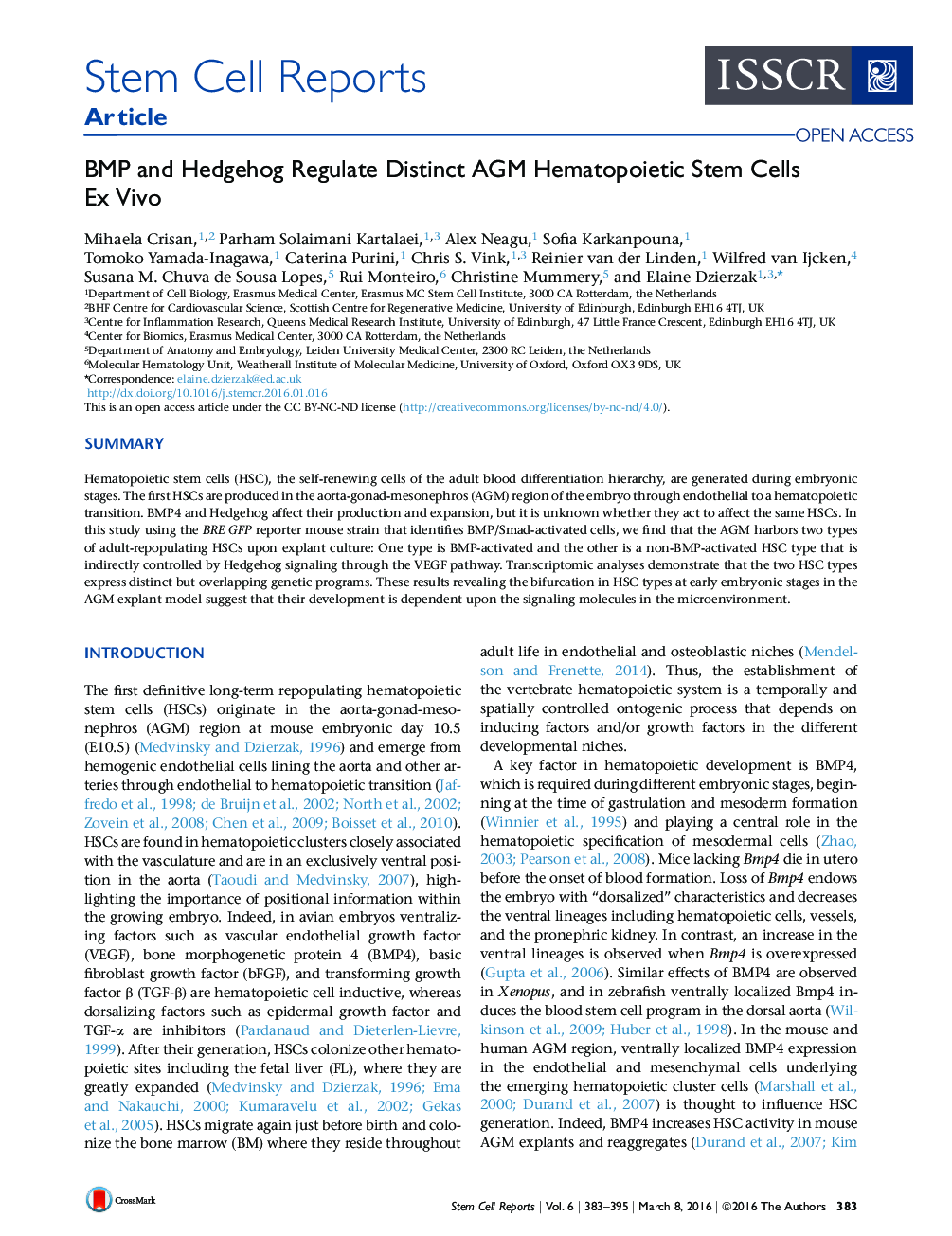| Article ID | Journal | Published Year | Pages | File Type |
|---|---|---|---|---|
| 2093312 | Stem Cell Reports | 2016 | 13 Pages |
•AGM explants contain two HSC types, BMP-activated and non-BMP-activated•Non-BMP-activated HSCs are dependent on Hedgehog/VEGF•Changes in the microenvironment ex vivo contribute to novel HSC composition
SummaryHematopoietic stem cells (HSC), the self-renewing cells of the adult blood differentiation hierarchy, are generated during embryonic stages. The first HSCs are produced in the aorta-gonad-mesonephros (AGM) region of the embryo through endothelial to a hematopoietic transition. BMP4 and Hedgehog affect their production and expansion, but it is unknown whether they act to affect the same HSCs. In this study using the BRE GFP reporter mouse strain that identifies BMP/Smad-activated cells, we find that the AGM harbors two types of adult-repopulating HSCs upon explant culture: One type is BMP-activated and the other is a non-BMP-activated HSC type that is indirectly controlled by Hedgehog signaling through the VEGF pathway. Transcriptomic analyses demonstrate that the two HSC types express distinct but overlapping genetic programs. These results revealing the bifurcation in HSC types at early embryonic stages in the AGM explant model suggest that their development is dependent upon the signaling molecules in the microenvironment.
Graphical AbstractFigure optionsDownload full-size imageDownload as PowerPoint slide
